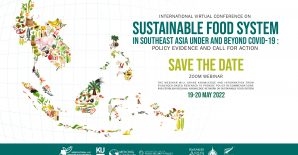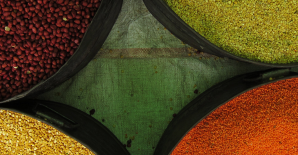Agricultural products’ processors ask government to help them with concessional loans
(24 News Agency, 20 May 2016) Processors of agricultural products ask the government to help them with concessional loans. Appeal of the Chamber of Commerce and Industry of the Kyrgyz Republic to the head of the Cabinet Sooronbay Jeenbekov says. The document notes that in recent years the government provides soft loans at 7-10 percent per annum for the development of the agricultural sector. It helped to increase the volumes of production and export of agricultural products. However, the value chain is needed for the stable development of country's economy. In 2014, the Cabinet has included agricultural products' processors in the register of applicants for subsidized loans at the initiative of entrepreneurs. Companies, which have received loans, opened new production lines and expanded processing production, created value chain in the agricultural sector, significantly increasing the volume of output and exports.
National Bank of Kyrgyzstan enters foreign exchange market with intervention
(24 News Agency, 23 May 2016) The National Bank of the Kyrgyz Republic entered the foreign exchange market with intervention for the first time in a month and a half. Its website reported. As noted, the bank has bought $ 900,000 with the calculations on the date of the transaction and $ 600,000 - with calculations different from the transaction date. Prior to that, the National Bank bought dollars on April 11. Then the volume of interventions amounted to $ 22 million. Since the beginning of the year it has bought $ 11.02 million.
Prospects for the development of organic agriculture in Uzbekistan
(UzDaily, 20 May 2016) Increasing agricultural productivity is essential to Uzbekistan. Organic agriculture represents a great opportunity for reaching our economic goals.
Organic agriculture is a complete production management system which promotes the principles of health protection and promotion of agro-ecosystems, including biodiversity, biological cycles and soil biological activity. Today the priority in Uzbekistan is consumer protection and preservation of the biological characteristics of plants, which means less use of chemicals including pesticides, herbicides and synthetic fertilizers. As part of this work, Council of Farmers of Uzbekistan, UzLiDeP, Center for Support of Entrepreneurship and Farming in Uzbekistan in close cooperation with the Ministry of Agriculture and Water Resources of the Republic of Uzbekistan organized a "round table" on the theme: "Prospects for the development of organic agriculture in Uzbekistan" on May 19, 2016.
“Plant Your Forest” ecologic campaign takes place in Uzbekistan
(UzDaily, 23 May 2016) An ecologic campaign “Plant Your Forest” was held in Chimgan, Tashkent region, on 22 May 2016. It was conducted within ecologic initiative “Rehabilitation of Chimgan Forests”. The event was dedicated to International Day of Bio Diversity as the forest are home for many flora and fauna. It is important to preserve mountain forests to keep unique mountain ecosystem and landscape, the organizers noted. During the campaign, the participants planted apple and pistachio trees.
Locusts destroy large area of crops in southern Tajikistan
(Asia-Plus, 19 May 2016) Farmers in Khatlon’s district of Farkhor, near the border with Afghanistan, have lost hundreds of hectares of wheat, watermelon, vegetables and other crops, due to an infestation of locusts, according to the Radio Liberty’s Tajik Service. According to RFE/RL’s Tajik Service, they said that the government had not provided funds to fight the pests as in past years.
FAO national consultations to develop regional project held in Dushanbe
(Asia-Plus, 17 May 2016) National consultations organized by FAO in Tajikistan held today will assist local and international partners to integrate resilience strategies into their policies and action plans, and adopt and expand the use of climate-smart agriculture practices. According to FAO CO in Tajikistan, the project corresponds to achieving one of its five Strategic Objectives – namely to “make agriculture, forestry and fisheries more productive and sustainable” in Central Asia and Turkey.
Statistics help paint a picture of Central Asia’s rural women
(FAO News, 17 May 2016) Gender profiles for the agricultural and rural sectors of Tajikistan and Kyrgyzstan – along with a new agri-gender statistics toolkit – are being presented by FAO at a two-day workshop here this week. The new products are aimed at supporting enhanced production and use of sex-disaggregated agricultural data, part of FAO’s commitment to helping countries empower rural women. When national governments undertake economic and agricultural reforms without adopting a gender perspective, there is a risk that the differential impact of new policies and programmes on women and men will be overlooked or inadequately understood.
FAO putting down roots in Kazakhstan
(FAO News, 19 May 2016) Ending hunger and other goals where FAO plays an active role are part of a globally agreed agenda for the next 15 years. It was only natural, then, for FAO’s representative in Kazakhstan to take part in a recent tree-planting ceremony designed to draw public attention to those goals. To raise public awareness of the 17 Sustainable Development Goals and contribute to the greening of Astana city, the United Nations in partnership with the Sustainable Development Earth Foundation planted poplar trees at the Kazakhstan State University of Humanities and Law here on 6 May. Seventy trees were planted, as a nod to the UN’s 70th anniversary.
New FAO guidelines designed to combat cereal crop diseases, pests, and weeds
(FAO News 20 May 2016) Preventive measures to combat diseases, pests, and weeds in cereal crops are more important than ever in regions like Central Asia where populations are growing. Subject to pests and diseases such as yellow rust, wheat is the area’s main staple food. All too often in recent years, harvests have suffered significant losses in yield.
New guidelines laid out in FAO’s just-released publication, Monitoring Diseases, Pests, and Weeds in cereal crops, provide a standardized overview of monitoring and controlling of pests and diseases that plague cereal crops in the region. Put into practice, the guidelines should help increase per capita grain production in Central Asia, reducing economic losses for farmers and rural poverty in the region.
Publications
(FAO May 2016) Abstract: The Guidelines aim to support countries in the development of nutrition-sensitive agriculture practices that consider the nutrient composition of biodiversity for food and agriculture (in particular the varieties, cultivars and breeds of plants and animals used as food, as well as wild, neglected and underutilized species) to address malnutrition in all its forms. The Guidelines are divided into three main elements: Research, implementation, and awareness. Examples of activities are provided on how mainstreaming could be implemented depending on each country’s needs and capabilities. (Russian Version)
Exchange Rate Developments and Policies in the Caucasus and Central Asia
(IMF May 2016) Summary: Since late 2014, exchange rates (ERs) and ER regimes of the Caucasus and Central Asia (CCA) countries have come under strong pressure. This reflects the decline of oil and other commodity prices, weaker growth in Russia and China, depreciation of the Russian ruble, and appreciation of the U.S. dollar, to which CCA currencies have historically been linked. Weaker fiscal and current account balances and increased dollarization have complicated the picture. CCA countries entered this period with closely managed ER regimes and, in many cases, currencies assessed by IMF staff to be overvalued. CCA central banks have price stability as their main policy objective, and most have relied on ER stability to achieve this objective. Thus, the first policy response involved intervention in local foreign exchange (FX) markets, often with limited communication. In this context, the IMF staff has reviewed ER policy advice and implementation strategies for CCA countries.




Leave a Reply